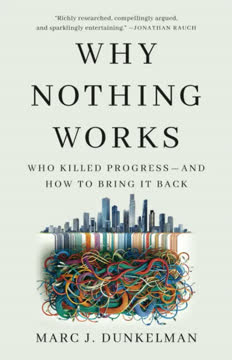Key Takeaways
1. Progressivism's Core Conflict: Centralization vs. Decentralization
In essence, a movement that’s purported to be bent on growing government appears, upon closer inspection, more driven to paring it back.
Two conflicting impulses. Progressivism, often seen as a unified drive for government action, is fundamentally split between two opposing forces: Hamiltonian and Jeffersonian. The Hamiltonian impulse seeks to centralize power in expert-led institutions to solve large-scale problems and bring order from chaos, like building infrastructure or regulating industries. Conversely, the Jeffersonian impulse aims to decentralize power, protecting individuals and local communities from perceived tyranny and overbearing authority.
Unrecognized tension. This internal ideological schism often goes unnoticed by progressives themselves, leading to contradictory policy stances. For instance, advocating for national climate action (Hamiltonian) while simultaneously championing reproductive rights (Jeffersonian) stems from these distinct narratives about power. The former seeks to empower a central authority to act, while the latter seeks to limit government's coercive reach over individuals.
Historical roots. This tension isn't new; it echoes the foundational debates between Alexander Hamilton, who feared chaos and sought a strong central government, and Thomas Jefferson, who feared tyranny and championed local democracy. Understanding this deep-seated conflict is crucial to comprehending why progressive efforts often falter, as the movement frequently undermines its own goals by pulling in opposite directions.
2. The Rise of Hamiltonian Progressivism: Order from Chaos
The nation was going through something akin to what the journalist George Packer would later term an “unwinding.”
Industrial disruption. The late 19th century saw America's "island communities" and decentralized power structures overwhelmed by rapid industrialization, particularly the rise of powerful railroad monopolies. Local courts and political machines, once capable of balancing interests, were rendered impotent against these new, continent-spanning behemoths, leading to widespread economic turmoil and social unrest.
Progressive response. In response to this chaos, a new brand of progressivism emerged, largely Hamiltonian in nature. Reformers sought to build up centralized public authority to counter unchecked private power. Key initiatives included:
- Interstate Commerce Commission (ICC): To regulate railroads and prevent predatory practices.
- Civil Service Reform: To replace patronage with merit-based appointments, professionalizing government.
- Expert Commissions: To manage complex public functions like port authorities and utilities, insulated from local politics.
"Hamiltonian means to Jeffersonian ends." This era saw figures like Theodore Roosevelt and Woodrow Wilson, despite their differences, embrace the idea that strong, expert-led government was necessary to achieve social progress. The First World War further solidified this trend, demonstrating the efficacy of centralized planning and administration, setting the stage for the New Deal's expansive vision.
3. The Establishment's Zenith and the Seeds of Disillusion
His was an explicitly paternalistic vision—one in which the riffraff were to be civilized by a paternalistic state.
TVA as a model. Franklin Roosevelt's Tennessee Valley Authority (TVA) epitomized Hamiltonian progressivism, showcasing how centralized public power could transform an impoverished region through top-down planning, dam construction, and electrification. This paternalistic approach, led by figures like David Lilienthal, aimed to "civilize" the rural poor and integrate them into the modern economy, often without regard for local opposition.
Post-war deference. Following the Great Depression and World War II, a "cultural inclination to authority" prevailed. The "Establishment"—a coterie of prep school-bred, Ivy League-trained experts—was widely trusted to manage national and international affairs. This era saw the zenith of Hamiltonian progressivism, with government undertaking massive projects like the interstate highway system and expanding social programs like Social Security, Medicare, and Medicaid.
Cracks in the facade. However, by the late 1950s and early 1960s, seeds of disillusionment began to sprout. Municipal scandals, perceived bureaucratic incompetence (e.g., the "missile gap"), and the growing influence of "power elites" (C. Wright Mills) chipped away at public trust. This nascent skepticism, particularly among the burgeoning baby boomer generation, questioned the Establishment's benevolence and competence, paving the way for a significant ideological shift.
4. The Cultural Aversion to Power: From Chaos to Tyranny
And you’ve got to put your bodies upon the gears and upon the wheels, upon the levers, upon all the apparatus—and you’ve got to make it stop!
Shift in fear. The 1960s marked a profound narrative turning point: progressivism's fear of chaos was eclipsed by a fear of tyranny. Events like the Vietnam War, urban unrest, civil rights abuses, and environmental degradation exposed the dark side of centralized power. The "credibility gap" between government rhetoric and reality, coupled with revelations like the My Lai massacre and the Pentagon Papers, fostered deep mistrust.
The New Left's critique. The Students for a Democratic Society (SDS) and the broader New Left vehemently rejected "corporate liberalism," viewing the Establishment as an oppressive "octopus" that needed to be dismantled. Figures like Mario Savio urged direct action to "make it stop," arguing that order itself was at the root of America's problems. This explicitly Jeffersonian impulse sought to liberate individuals from the coercive grip of powerful institutions.
Permanent metamorphosis. While often seen as a temporary aberration, the 1960s initiated a permanent progressive metamorphosis. The cultural aversion to power became deeply ingrained, influencing journalism (Woodward and Bernstein), academia (Foucault), and popular culture (films like Chinatown and One Flew Over the Cuckoo's Nest). Robert Caro's The Power Broker, exposing Robert Moses's abuses, solidified the narrative that power corrupted, and absolute power corrupted absolutely.
5. Manacling the Octopus: The Rights Revolution and Regulatory Paralysis
Expertise, the strength of modern government, can become a monster which rules with no practical limits on its discretion.
Judiciary as ally. With the cultural aversion to power firmly established, progressives sought to "manacle the octopus" by empowering individuals with new "rights" and leveraging the judiciary. The Supreme Court's post-Lochner shift, particularly Justice Stone's "Footnote," opened the door for courts to become allies in protecting minorities and upholding constitutional rights. The Administrative Procedure Act (APA) of 1946, initially a modest procedural safeguard, became a powerful tool for challenging agency decisions.
"The New Property." Charles Reich's "The New Property" (1964) argued that government benefits (like welfare or driver's licenses) were akin to personal property, and their arbitrary deprivation violated individual rights. This concept fueled the "rights revolution," leading to:
- LEOBORs: Police Officers' Bills of Rights, initially seen as progressive checks on abusive chiefs, later became shields for misconduct.
- Welfare reform: Goldberg v. Kelly (1970) granted welfare recipients due process rights, transforming benefits into entitlements and limiting social workers' paternalistic discretion.
- Environmental law: NEPA (1970) required environmental impact statements, which public interest groups (e.g., CLASP, EDF) weaponized through litigation to challenge projects.
Regulatory straitjacket. This proliferation of rights and judicial oversight, while well-intentioned, led to the "ossification of rulemaking." Bureaucracies became entangled in endless procedural hurdles, legal challenges, and conflicting mandates. The Federal Register swelled, and agencies like the EPA faced constant litigation, rendering them "authentically incompetent" and demoralizing public servants.
6. The Housing Crisis: When Local Control Becomes Exclusion
The new system wasn’t working.
Zoning's dual nature. Early 20th-century zoning (Hamiltonian) aimed to bring order to urban growth, separating residential, commercial, and industrial uses. While initially a tool for rational planning, it was also quickly co-opted for exclusionary purposes, particularly after Euclid v. Ambler (1926) upheld single-family zoning, effectively enabling racial and class segregation.
Urban renewal's failure. Post-WWII "urban renewal" (Hamiltonian) sought to clear slums and rebuild cities, but often resulted in "Negro removal" and left barren wastelands. This failure, coupled with rising home values and white flight to the suburbs, fueled a Jeffersonian backlash against top-down planning. Communities sought to protect their "character" and property values from unwanted development.
"Veto by voice." Reformers, leveraging new legal tools and the cultural aversion to power, transformed zoning into a powerful instrument of local control and exclusion. This led to:
- Fasano v. Board of County Commissioners (1973): Required open, formal processes for zoning changes, giving affected residents more legal leverage.
- CEQA (California Environmental Quality Act): Weaponized environmental concerns to block development, even for affordable housing or public transit.
- PACB (Public Authorities Control Board) in New York: A legislative veto over state projects, famously used to scuttle Amazon's HQ2.
The result is a severe housing shortage and skyrocketing prices, as local "NIMBYs" (Not In My Back Yard) effectively wield veto power, making it nearly impossible to build new homes.
7. Infrastructure Gridlock: The Veto by Voice
The individual has to yield in matters of this kind to the entire country, to the advantages and needs of the majority of people.
Highways as progress. In the mid-20th century, the interstate highway system (Hamiltonian) was a monumental achievement, connecting isolated communities and fueling economic growth. Figures like Thomas MacDonald and Robert Moses, embodying the Establishment, wielded immense power to plan and build, often overriding local objections in the name of the "greater good."
The "Freeway Wars." By the 1960s, this top-down approach faced fierce Jeffersonian resistance. Critics like Jane Jacobs and Helen Leavitt highlighted the destruction of neighborhoods and parks. The "Freeway Wars" saw communities mobilize against perceived tyranny, leading to:
- Section 4(f) (Yarborough Rule): Prohibited federal funding for projects disrupting public green spaces unless no "feasible and prudent alternative" existed.
- Overton Park v. Volpe (1971): Supreme Court ruling that empowered citizens to challenge highway projects on procedural grounds, forcing agencies to conduct exhaustive studies and consider alternatives.
"No such thing as shovel-ready projects." The cumulative effect of these procedural hurdles, environmental reviews, and expanded litigation rights has created infrastructure gridlock. Projects face endless delays, cost overruns, and multiple veto points, making it nearly impossible to build large-scale public works. Obama's frustration with "shovel-ready projects" reflected this reality, where well-intentioned reforms designed to prevent abuse now paralyze progress.
8. The Green Energy Paradox: Good Intentions, Stalled Progress
Even if we have the will to overcome our addiction to fossil fuels, is there actually a way?
Early electricity chaos. The early 20th century saw a chaotic, unregulated electricity market. Progressives, fearing private abuse, established public utility commissions (Hamiltonian) to centralize control, ensuring reliable service and reasonable rates. This "utility consensus" fostered the growth of the nation's electrical grid.
Consensus breaks. By the 1970s, oil crises and environmental concerns shattered this consensus. Progressives, now wary of "captured" regulators and the "energy octopus," pushed for deregulation (Jeffersonian) to foster competition and green the grid. However, this created a paradox: while the desire for clean energy grew, the ability to build the necessary transmission infrastructure diminished.
Transmission paralysis. Unlike natural gas pipelines, which benefit from federal eminent domain authority, new high-voltage transmission lines for renewable energy face a labyrinth of state and local approvals, environmental reviews, and public opposition. Projects like Maine's NECEC (New England Clean Energy Connect) are stalled by:
- Local opposition: "Not in my backyard" concerns about visual impact, property values, and environmental disruption.
- Entrenched interests: Fossil fuel companies and existing utilities often fund opposition to new transmission lines that threaten their market share.
- Procedural hurdles: Multiple state and federal agencies, each with veto power, lead to endless delays and litigation, driving up costs and making projects unfeasible.
The result is a "tragedy of the commons in reverse": everyone agrees on the need for clean energy, but no one has the centralized authority to overcome localized resistance and build the necessary infrastructure, leaving the green economy wallowing in good intentions.
9. Full-Circle Progressivism: The Imperative for Balance
Progressivism, born more than a century ago, has come full circle.
A new "Articles of Confederation" moment. Just as the early American republic struggled with a weak central government under the Articles of Confederation, modern progressivism faces a similar dilemma: public power has been so diffused that government struggles to deliver. The pendulum has swung too far towards Jeffersonian decentralization, creating a "vetocracy" where any single objection can paralyze progress.
Voice, not veto. To break this cycle, progressivism must rebalance its Hamiltonian and Jeffersonian impulses. This means:
- Empowering decision-makers: Granting public officials sufficient discretion to make timely, difficult choices that serve the greater good, even if they impose localized costs.
- Streamlining processes: Reducing the myriad veto points and legal hurdles that currently bog down infrastructure, housing, and energy projects.
- Ensuring accountability: While empowering officials, robust mechanisms for transparency and oversight must remain to prevent a return to Robert Moses-era abuses.
Political imperative. Rendering government incompetent is a self-defeating strategy for a movement that seeks to use government to solve big problems. The public's frustration with dysfunctional bureaucracy fuels populism and undermines progressivism's appeal. By embracing a "full-circle progressivism" that prioritizes a competent, balanced public authority, the movement can regain trust and effectively address the nation's most pressing challenges, from climate change to housing shortages.
Last updated:
Review Summary
Why Nothing Works explores the conflict between centralized and decentralized governance in American progressivism. Dunkelman argues that excessive decentralization has led to government paralysis. Readers appreciate the historical perspective and synthesis of complex issues, but some find the book repetitive and light on solutions. Many view it as an important contribution to understanding modern political dysfunction, particularly in infrastructure and policy implementation. Critics note a lack of consideration for conservative viewpoints and oversimplification of certain issues. Overall, the book is seen as thought-provoking but occasionally frustrating.
Similar Books

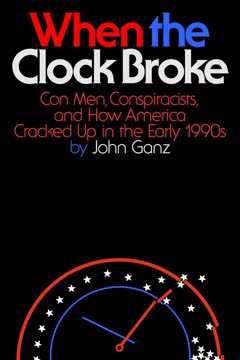
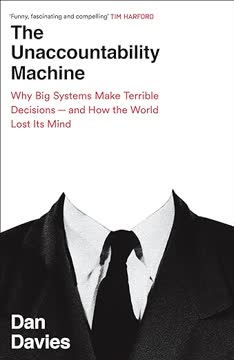

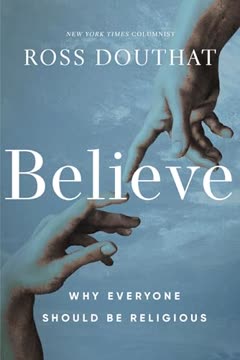

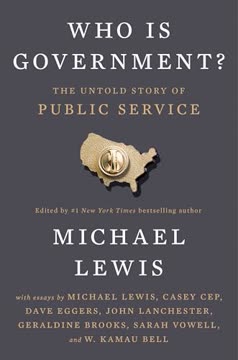

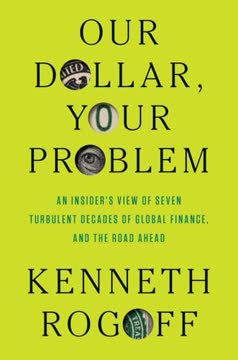

Download PDF
Download EPUB
.epub digital book format is ideal for reading ebooks on phones, tablets, and e-readers.
